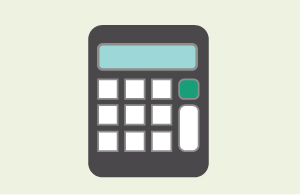Note 10: Property, plant, and equipment
Accounting policy
Property, plant, and equipment includes furniture and fittings, leasehold improvements, office equipment, information technology hardware, and motor vehicles. Property, plant, and equipment is measured at cost, less accumulated depreciation, and impairment losses.
Additions
Individual assets, or groups of assets, are capitalised if their cost is greater than $1,000.
The cost of an item of property, plant, and equipment is recognised as an asset only when it is probable that future economic benefits or service potential associated with the item will flow to the Office and the cost of the item can be measured reliably.
In most instances, an item of property, plant, and equipment is recognised at its cost. Where an asset is acquired through a non-exchange transaction, it is recognised at fair value as at the date of acquisition.
Disposals
Gains and losses on disposals are determined by comparing the proceeds with the carrying amount of the asset. Gains and losses on disposals are included in the surplus or deficit.
Subsequent costs
Costs incurred subsequent to initial acquisition are capitalised only when it is probable that future economic benefits or service potential associated with the item will flow to the Office and the cost of the item can be measured reliably. The costs of day- to-day servicing of property, plant, and equipment are recognised in the surplus or deficit as they are incurred.
Depreciation
Depreciation is provided on a straight-line basis on all property, plant, and equipment, at rates that will write off the cost of the assets to their estimated residual values over their useful lives. The useful lives and associated depreciation rates of major classes of assets have been estimated as follows:
- Furniture and fittings 4 years (25%)
- Office equipment 2.5-5 years (20%-40%)
- IT hardware 2.5-5 years (20%-40%)
- Motor vehicles 3-4 years (25%-33%)
Leasehold improvements are depreciated over the unexpired period of the lease or the estimated remaining useful lives of the improvements, whichever is the shorter.
The residual value and useful life of an asset is reviewed, and adjusted if applicable, at each financial year-end.
Impairment of property, plant, and equipment
Property, plant, and equipment assets held at cost that have a finite useful life are reviewed for impairment whenever events or changes in circumstances indicate that the carrying amount might not be recoverable. An impairment loss is recognised for the amount by which the asset's carrying amount exceeds its recoverable amount. The recoverable amount is the higher of an asset's fair value less costs to sell and value in use.
Value in use is determined using an approach based on a depreciated replacement cost approach, a restoration cost approach, or a service units approach. The most appropriate approach used to measure value in use depends on the nature of the impairment and availability of information.
If an asset's carrying amount exceeds its recoverable amount, the asset is impaired and the carrying amount is written down to the recoverable amount. The impairment loss is recognised in the surplus or deficit.
The reversal of an impairment loss is also recognised in the surplus or deficit.
Critical accounting estimates and assumptions
Determining the depreciation rates for physical assets requires judgement as to the likely period of use of the assets. Different assessments of useful lives would result in different values being determined for depreciation costs, accumulated depreciation, and net book values.
Breakdown of property, plant, and equipment and further information
| Furniture and fittings $000 |
Office equipment $000 |
Leasehold improvements $000 |
IT hardware $000 |
Motor vehicles $000 |
Total $000 |
|
|---|---|---|---|---|---|---|
| Cost | ||||||
| Balance at 1 July 2022 | 2,108 | 690 | 4,459 | 3,705 | 1,046 | 12,008 |
| Additions | 268 | 145 | 68 | 970 | 206 | 1,657 |
| Disposals | (64) | (91) | - | (125) | (99) | (379) |
| Balance at 30 June 2023 | 2,312 | 744 | 4,527 | 4,550 | 1,153 | 13,286 |
| Additions | 31 | 114 | 97 | 385 | 189 | 816 |
| Disposals | - | - | - | (478) | (239) | (717) |
| Balance at 30 June 2024 | 2,343 | 858 | 4,624 | 4,457 | 1,103 | 13,385 |
| Accumulated depreciation and impairment losses | ||||||
| Balance at 1 July 2022 | 1,763 | 579 | 2,208 | 2,568 | 370 | 7,488 |
| Depreciation expense | 182 | 87 | 422 | 800 | 143 | 1,634 |
| Elimination on disposal | (64) | (91) | - | (123) | (45) | (323) |
| Balance at 30 June 2023 | 1,881 | 575 | 2,630 | 3,245 | 468 | 8,799 |
| Depreciation expense | 194 | 95 | 443 | 725 | 132 | 1,589 |
| Elimination on disposal | - | - | - | (478) | (145) | (623) |
| Balance at 30 June 2024 | 2,075 | 670 | 3,073 | 3,492 | 455 | 9,766 |
| Carrying amounts | ||||||
| Balance at 1 July 2022 | 345 | 111 | 2,251 | 1,137 | 676 | 4,520 |
| Balance at 30 June 2023 | 431 | 169 | 1,897 | 1,305 | 685 | 4,487 |
| Balance at 30 June 2024 | 268 | 188 | 1,551 | 965 | 648 | 3,620 |

